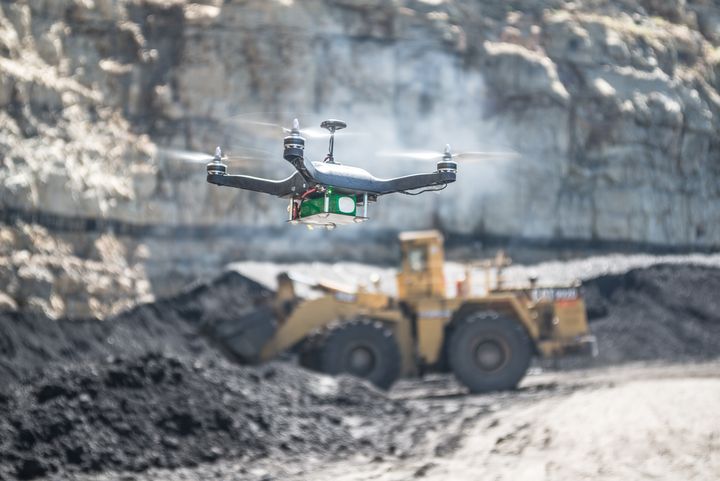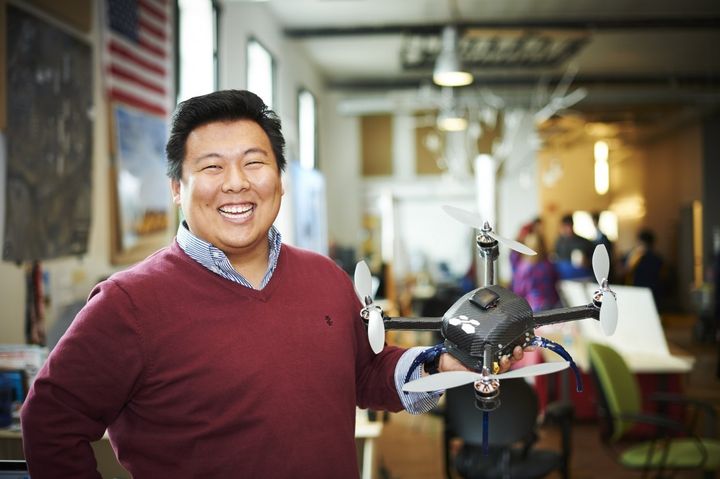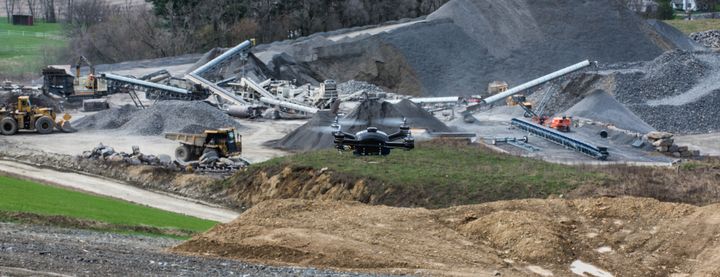
Are drones here to stay? Believe it or not, the answer to that question is one almost everyone agrees with and it is getting less controversial by the day. Drones are here to stay and they are rapidly disrupting hundreds of different industries and trades.
PwC released a report in May projecting the future value of the drone industry at $127 billion. That is ‘billion’ with a ‘b’. And while projections are just educated guesses, it is hard not to sympathize with ambitious estimations about the drone industry.
Interestingly, the rapid growth of drones has only attracted media attention for its least interesting aspects: amateur videography and gaming. But far from the beaches of your tech-savvy friend’s last vacation, drones are flying high, doing work that many people know nothing about.
Drone expert and pioneer Dick Zhang started a company called Identified Technologies that leverages these modern flying machines for construction mapping and analytics. He says construction will never be the same without them and I wanted to know why. So I asked him to share details about an industry we hear very little about.

Q: How much time can a drone save during a construction project?
Zhang: Job site progress has historically been tracked with manned survey teams measuring the entire site on foot. A standard 100 acre site could take a month to cover. Today, our Boomerang mapping drone captures that automatically in less than ten minutes. As much time and money as that saves, the greatest value comes from from the insights we can derive from analyzing that near real-time data stream.
For the first time in history, you can track progress trends and forecast ahead to see if a project is running on schedule or if it will need more resources to finish on time. You catch mistakes the first day, instead of after weeks of time and resources have been invested. These near real-time updates can save project managers weeks or even months over the course of a large project. In the construction business, schedule is everything. A single big piece of equipment can cost $10,000 a day, not including the staff to run it. Working faster not only reduces rental and labor costs, it allows more projects to be completed per year, pouring more money into both the top and bottom lines.
Q: Would you say construction is lagging behind or leading the way with its adoption of emerging technologies?
Zhang: Construction is among the top commercial uses for drones across all industries. There are so many opportunities to increase safety and efficiency that the applications are almost endless. Construction/surveying was one of the top 3 most common use-cases for 2015 FAA Section 333 exemptions for commercial drone use. Those numbers are very reliable, since everyone intending to fly drones commercially has to file for, and be granted, a Section 333 exemption.

Q: Where did the idea to use drones for construction come from?
Zhang: After seeing a drone demonstration at the GRASP lab at my alma mater the University of Pennsylvania, I was blown away by the potential use cases! I strapped a high resolution camera to a drone and started gathering data and experimenting with business models. From there, it wasn’t long before construction companies started requesting continuous project tracking and recommending us to their peers. Our partners’ feedback has been invaluable, helping us focus on the breakthroughs that have the most transformative impact.
Q: Is the biggest obstacle to widespread adoption of drones regulatory or is the value add economically still not appreciated?
Zhang: Regulatory issues were a bigger barrier to adoption before the FAA started awarding 333 commercial drone exemptions. We were one of the first companies to get a 333 approval and I wouldn’t wish those legal fees and processing hurdles on my worst enemy! While I fully support ensuring equipment, people, and processes are reliable, I hope it’s streamlined in the future to be closer to getting a commercial driver’s license. In the meantime, it hasn’t held our business back, since our clients are all covered under our 333 exemption.
Likewise, now that the ROI of drones have been proven in endless case studies, there’s much less skepticism about the value of the technology. Just a few years ago, many professionals only saw drones as toys to snap photos with. It’s such a rapidly changing industry, and we still have to help educate people, but today the conversation is no longer, “Why do we need drones?”, now it’s “How can we best utilize drones to achieve our strategic goals?” There’s a real sense of urgency from customers now that people realize they’re leaving money on the table every single day that they wait to bring the technology into their operations.

Q: What is next for drones and construction? Are there applications beyond scanning?
Zhang: We’re doing more and more 3D volumetric analysis on excavation, mining, and aggregate sites. As sensors become more compact, we will be able to send drones indoors to capture precision 3D maps to track, manage, and inform every aspect of the construction process. We’re also in the final stages of testing seek and avoid technology, NDVI cameras for vegetation and agriculture, and thermal sensors for pipeline gas leaks and livestock inventory.
As regulations continue to open up, we’ll be able to start deploying our Launchpad SmartDock, which automatically charges and swaps out the drone batteries to enable continuous monitoring and detection in remote areas.
As excited as I am about participating in the birth of this industry, the pace of adoption has surpassed my wildest expectations. If the current trends continue, a construction site without a drone will soon be as uncommon as a professional without a smartphone or e-mail address. For industry leaders who want to stay competitive, the capabilities that are now available are just too powerful to ignore.
